Blog

Flowers at peace in a sleeping city
Author: Itinerantur
Almost 20 years ago, Joan, someone we loved very much, encouraged the founder of Itinerantur to pay more attention to the world of plants than to human biology by saying: “plants are so much more grateful than people!”
In recent months, in which we have been experiencing a world without us, that phrase has taken on a new, and possibly passionate, meaning. You don't have to wander into a field or a forest to see: just take one step out on the streets (now that we can!)
After a tremendously rainy hydrological year, with people indoors and parks & gardens teams busy with other tasks, any crack in the pavement, unattended tree surround, pothole, trench in open land, abandoned window ledge or rusty fence has turned into a miniature garden, into a feast for the eyes and nose, into a festival for the thousands of insects we can once again see flitting about and enjoying this unexpected treat, almost as much as the birds that devour them on the wing, so much so that they look like airborne fish eating flying plankton.
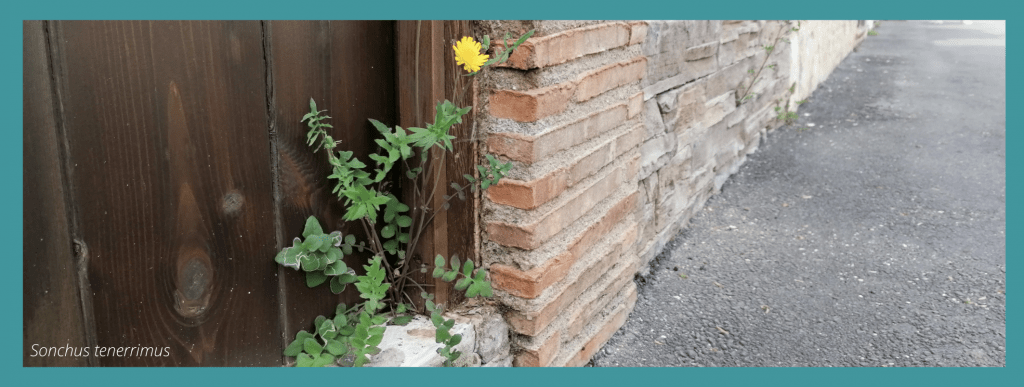
It's not our intention to find anything surprisingly new or drive the social networks wild with amazing images of wildlife recovering lost ground, we'd just like to present you with some small and humble marvels that we found near home, hardly 100 metres from here to the roundabout. What a world of colour to please the eye!
- Scientific name: Cerastium glomeratum
Common name: Clammy chickweed, sticky mouse-ear chickweed.

Found in a variety of habitats throughout Eurasia. It's what you'd call cosmopolitan, so much so that in Benicassim it decided to flower in a battered flight of steps into a house, as if it wanted to warn you about the risk of a fall when you go in. If you did, this little plant can ease your pain, it has analgesic properties.
- Scientific name: Convulvulus althaeoides
Common name: mallow bindweed, mallow-leaved bindweed.
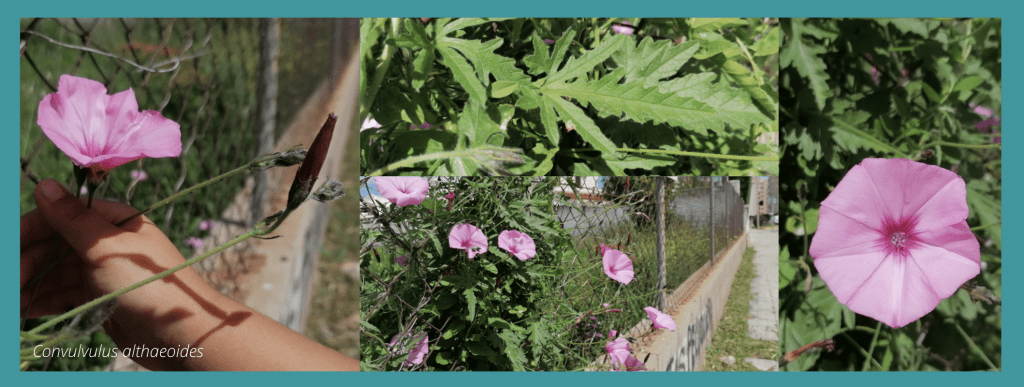
I'm sure you've seen this Mediterranean climbing plant lots of times, cheering up fences and railings with its attractive pink flowers. Our little one, Julia, says they smell of sugar! Summer's the time to see them in all their splendour, just when you need them most, because if they're properly prepared, they can provide relief from insect bites.
- Scientific name: Diplotaxis erucoides
Common name: white rocket, white wallrocket.
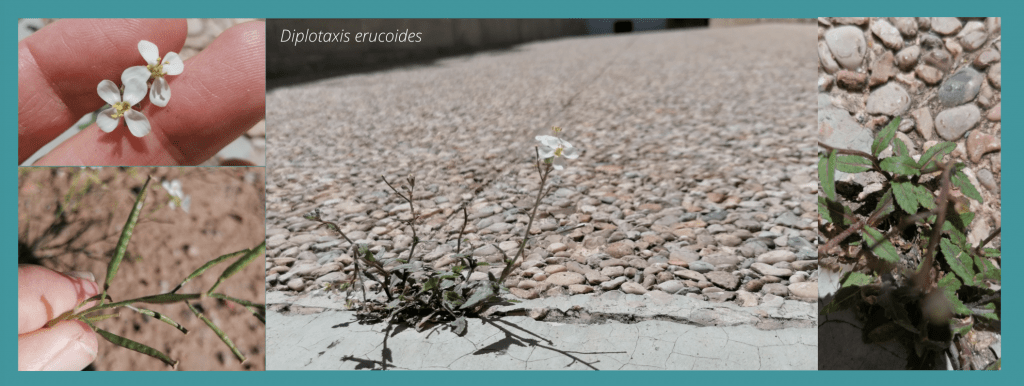
You can see this little prodigy of the roadsides and stubble almost all year round: it doesn't like to hide and flowers at the first drop of rain. What's more, like so many other common herbaceous plants, it's edible. I'll let you into a secret: our friend Nico, a chef at Pou de Beca, showed us how to prepare a delicious regional wasabi with its small, elongated pods.
- Scientific name: Galium aparine
Common names: cleaver, sticky grass, goose grass.
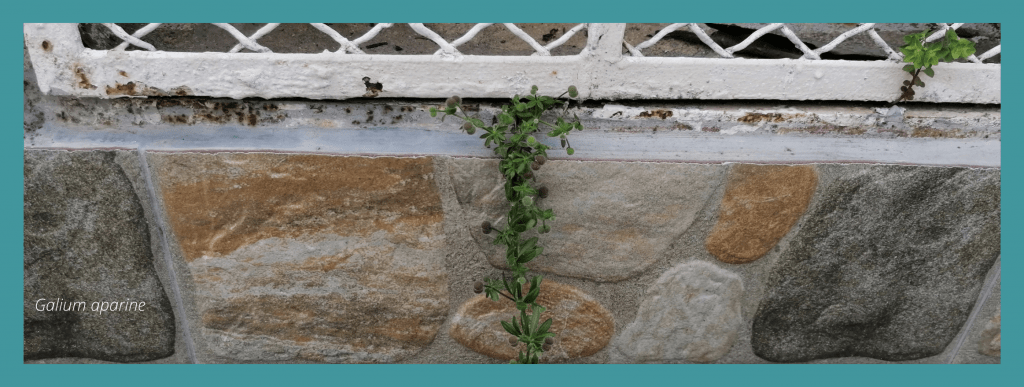
This plant was literally made to stay with you forever: it's covered with a multitude of tiny hooks like velcro. Its Latin name appears to come from the Greek gala (milk), as it was used to curdle milk and make cheese. And did you see? Another plant has joined it in its humble abode: up on the right you can see a Euphorbia!
- Scientific name: Oxalis pes-caprae
Common name: Bermuda buttercup, goat's foot, Cape sorrel.
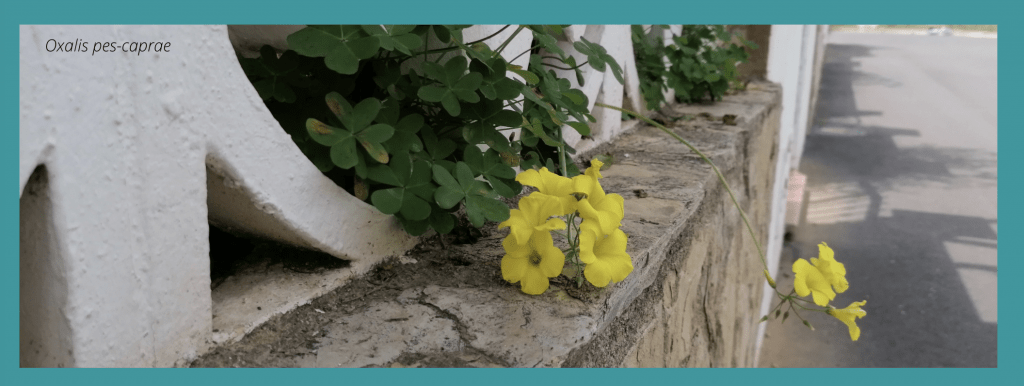
Don't let its beautiful yellow colour deceive you into forgetting that it's one of the most dangerous invasive plants we have around here. It covers everything! Look at how it wants to escape from the wall where we found it. Its only saving grace it that it's edible: it makes a refreshing addition to salads and drinks, and it increases appetite!
- Scientific name: Petunia x hybrida
Common name: Petunia.

The Spanish brought petunias from South America centuries ago to give more colour to their flowerbeds. And you can see that it adapted very nicely … And if you don't agree, just say it to the one in the photo: a hybrid with no guilt complex, seeking the Mediterranean sun. After all, they belong to the same family as tomatoes, potatoes and aubergines, and they all love to get out in the sun!
- Scientific name: Sonchus tenerrimus
Common name: slender sowthistle.
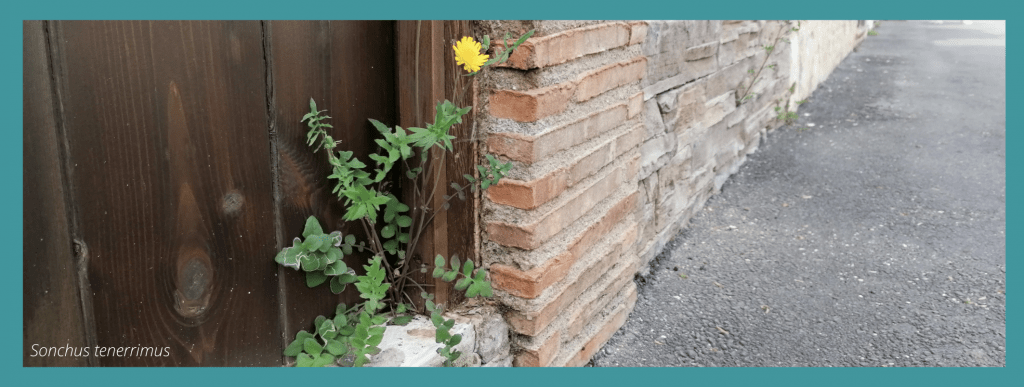
This flower pops up everywhere, in the most urban locations and right out in the countryside. And it always blooms as if it were saying "eat me". Sowthistles and their tender leaves are one of the best-known edible greens around here, perfect for boiling or tossing into a salad. Bon appetit!
Don't you think our cities would be much healthier, kinder and more beautiful with plants and flowers like these growing everywhere, in places free of asphalt? You can see that they need little in the way of space and no attention at all.
They give us so much for so little!
